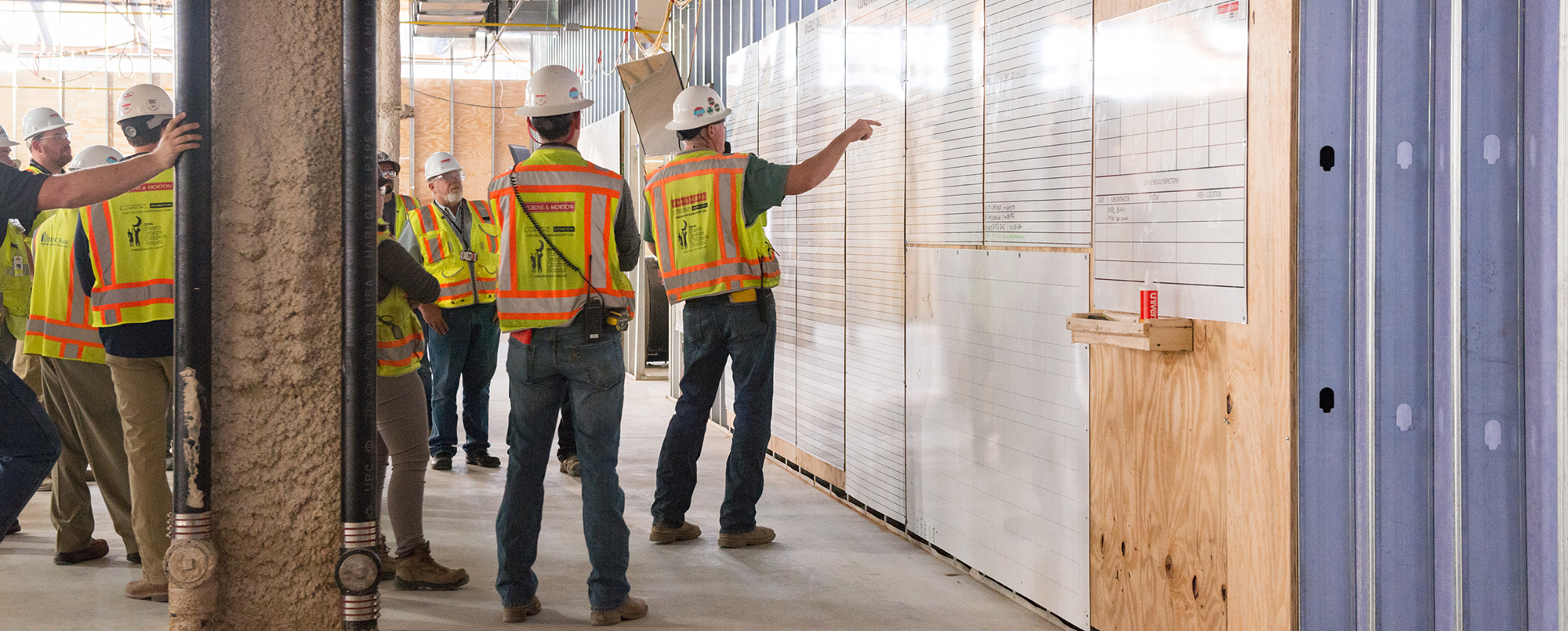By Jeff Palombo, Vice President of Safety Operations at Robins & Morton
Human Performance. It’s a phrase you often hear associated with sociological principles, Lean, Six Sigma, airline and automobile industries, along with many other professions and ideologies, but what does it mean? Further, what could it possibly have to do with safety?
Simply put, Human Performance (HP) can be defined as individuals working within an organization to meet expectations set by leaders. Digging a little deeper, the principles of HP are based on the science of understanding human error and using that science and reasoning to support the safe, efficient, and reliable execution of work.
T raditional approaches to safety are built on the idea that humans are a problem to control rather than a solution to harness. If only we make more rules, implement tighter controls, incentivize people for not getting hurt, and blame or shame them when they make an error, we will achieve safety excellence. One only needs to look at the news to know this approach is not working.
raditional approaches to safety are built on the idea that humans are a problem to control rather than a solution to harness. If only we make more rules, implement tighter controls, incentivize people for not getting hurt, and blame or shame them when they make an error, we will achieve safety excellence. One only needs to look at the news to know this approach is not working.
Think of this revolution as “safety differently,” a phrase coined by Sidney Dekker. A Human Performance approach to safety targets the overall system that humans are working within and recognizes human error as a consequence of failure, not the cause. This approach provides a window into the operating system and recognizes latent organizational conditions, error precursors, error traps, and performance modes to permit better defenses. It also recognizes that error is normal and even the best people make mistakes.
Our reaction to these mistakes matter: we can blame, or we can learn, but we cannot do both. Sources of these errors are usually induced by the operating system we are working within. Only when we understand and learn from these events can we change the system or build additional consequence control measures around us all.
Practitioners of a Human Performance operating philosophy employ a set of practical tools designed to assist with anticipating and preventing error-provoking situations and empowering onsite team members to make positive, efficient decisions. A few of these tools include:
• Pre-task planning: a meeting where all team members demonstrate their understanding of their daily assigned tasks, task objectives, safety hazards, control measures, equipment needs, quality expectations, and the roles and responsibilities of all involved.
• Post-task review: briefings that encourage team members to provide feedback on completed tasks and their involvement in them, including improvement opportunities, surprises, unexpected outcomes, quality or efficiency concerns, and more.
• Questioning attitude: promoting thought before action is taken ultimately creating awareness of uncertainty, hazards and the significance of action(s) before proceeding.
• Critical steps: recognizing actions/steps that absolutely must go right or could result in significant property damage or personal injury if conducted improperly
• Self-checking/Stop-Think-Act-Review (S.T.A.R.): focusing the attention and thoughts of a team member prior to the intended action to enhance attention to detail and reach the desired outcome.
• Fair accountability/just culture: understanding that mistakes will happen but employees feel safe to speak up when they’ve made a mistake or identified how one could occur.
• Team forums: providing a platform for teams to provide feedback on safety, task efficiency, quality and logistics
• Equity huddles: monthly one-on-one meetings between managers and craftworkers in a no distraction environment to discuss performance, career path goals, organizational improvement, and feedback. This tool is unique to Robins & Morton.
• Stop work authority: ability for anyone onsite to stop work anytime they observe an at-risk condition or unsafe behavior.
Human Performance is neither a program, nor is it technically a new approach as it has been prevalent in many industries since the second half of the 20th Century. As organizations, much like our own, are looking for ways to continuously improve, many view the application of Human Performance as the next logical step – building on past successes toward an interdependent safety culture. Although we are initially implementing this operating philosophy into our pursuit of safety excellence, the Human Performance approach can be applied to many disciplines, similarly to our Building Forward® initiative – both embodying a new way of thinking for achieving operational excellence.
When we, as an industry, can view our people as allies in identifying and mitigating risk, we begin adding value to projects in so many quantifiable ways. From a client perspective, creating this onsite, interdependent culture allows management to expand to all onsite employees, inherently creating a safer environment, leading to fewer incidents, fewer delays, and greater budget and schedule management as a result. From a trade partner perspective, it creates a more collaborative safety culture, providing assistance to each trade in helping them maintain a stronger, healthier workforce. For all employees, this approach creates trust, drives out fear, and truly illustrates the respect we have for them as individuals, as team members and as friends. Overall, the project’s safety culture inarguably thrives under the Human Performance operating philosophy.
As we continue this safety journey, learning, believing, and living the Human Performance principles, these tools will become more important in our mission to send everyone home to their families everyday.

